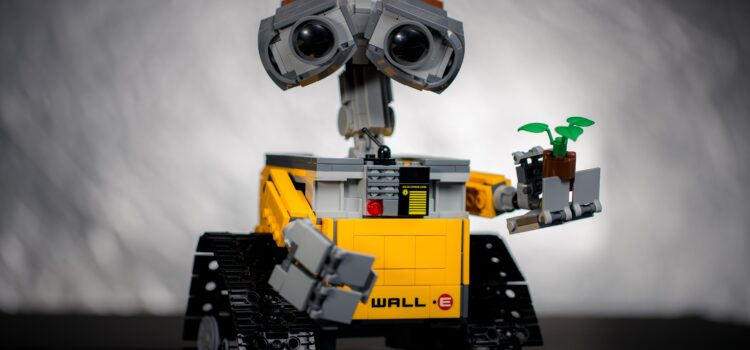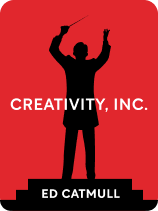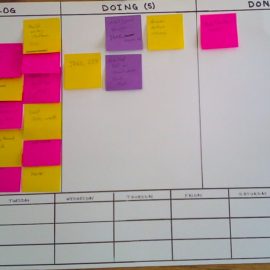

This article is an excerpt from the Shortform book guide to "Creativity, Inc." by Ed Catmull. Shortform has the world's best summaries and analyses of books you should be reading.
Like this article? Sign up for a free trial here .
Are you trying to build a creative workplace? Do you know how to support creativity while ensuring there’s feedback to make the work better?
Building a creative workplace can be challenging. Ed Catmull offers some lessons from Pixar’s successes in Creativity, Inc. You need to ensure there’s feedback without stifling the creative process.
Read more about feedback in a creative workplace.
Building a Creative Workplace
As Pixar solidified itself as a premier animation studio, Catmull discovered the things that made his company stand out from the rest. In this section, you will learn the core concepts that you can use to develop a successful creative organization. These keys include promoting candor in the workplace, overcoming fear, and embracing failure.
Promoting Candor
Candor is a willingness to be forthright about issues, concerns, and ideas. In a creative workplace, candor allows teams to get straightforward feedback to improve their final product. This helps employees see flaws they may have been blind to and get suggestions to move forward.
To ensure that employees feel comfortable sharing their opinions, develop a judgment-free environment that allows employees to speak up. At Pixar, Catmull developed this environment using a process he called Braintrust Meetings. Every few months, Pixar team members who aren’t directly involved in a particular project gather to watch material from the project. Afterward, they talk with the project’s director and head creatives about issues and potential routes forward. These meetings rely on everyone sharing their opinions openly and willingly.
Navigating Fear and Insecurity in a Creative Workplace
Ensuring candor isn’t easy. People often let their fears and insecurities get in the way of open feedback. In a creative workplace, it can be challenging if people feel like their work is a personal reflection. As a leader, Catmull believed his responsibility was to ensure people feel comfortable enough to share their thoughts. For example, new members attending Braintrust Meetings often feel insecure about sharing their opinion because they’re new to the group and don’t want to step on any toes.
To navigate this, you have to remind employees of the following:
- Open dialogue is critical to the creative process. Without open feedback, flaws and issues can’t be addressed as they arise and can lead to serious problems down the road.
- Feedback won’t lead to retaliation. Many employees (especially lower-level employees or new team members) fear their critiques and suggestions will lead to resentment from colleagues. To ensure candor, you have to constantly remind employees that they won’t be punished for their openness, even if their opinion is contentious or unpopular.
- Discussion is more effective than written feedback. Written notes make the process of critique more comfortable as you don’t have to contend with the immediate emotions of the other person. However, written notes can often be misconstrued and don’t give the person receiving the feedback a chance to ask for clarification. Delivering notes in-person lets you control the tone and allows the other person to ask follow-up questions.
Building an Effective Feedback Session
To develop an effective feedback session, build an environment of mutual respect and comfortability. To achieve this, consider the following tips:
- Involve passionate people from a variety of departments. If they care about the project, they won’t hold back when pointing out issues and will likely bring more solutions to the table.
- Promote the use of “good notes,” which expose a flaw without attacking the person, being insulting, or making a demand. This creates an environment of collaboration that allows your team to work together as they seek out potential solutions to issues. For example, if you’re giving feedback on a presentation, a “bad note” would be, “Why was that so repetitive? Are you just in love with your voice?” A “ good note” would be, “The presentation’s a little repetitive, so let’s talk about some ways that we can streamline the content.”
- Don’t abuse your higher position or make demands of your creative teams. Instead, offer suggestions on ways to move forward and allow the head of a project to find the best way to implement feedback. In Pixar’s case, Catmull created this rule because he believed that studio demands only hurt a project. When given demands, creatives often make choices for the sake of pleasing the studio instead of making the best film possible.
Though these feedback sessions are a powerful tool to create candor, they won’t automatically fix all of the issues in your organization. Here are some things to consider about the complexities of implementing feedback sessions:
- Trust and comfort take time to develop. Initial feedback sessions may be uncomfortable or ineffective as people hold back or struggle to give “good notes.” This will become easier over time, but it can’t be rushed.
- If you’re working with outside teams or collaborators, they may not understand the nature of your feedback sessions. Because of this, you may be stuck giving feedback to someone who doesn’t want to take your notes or simply doesn’t possess the skills necessary to implement feedback. To navigate this, show patience and remind the person or team that your feedback is only meant to help improve the project.
- People and relationships change over time. While the makeup of a feedback group may be effective at first, relationships change over time. To accommodate this, be aware of the ever-changing dynamics of your organization and adjust the makeup of your core feedback group
Pixar’s Notes Day: An Example of Candor in a Creative Workplace
In addition to Braintrust Meetings, Pixar uses another forum for the discussion of feedback through “Notes Day.” On Notes Day, Pixar shuts down regular operations and runs a variety of discussion forums based on topics submitted by employees. These topics range from highly technical concerns such as rendering techniques to common issues such as dealing with entitled people. While Braintrust Meetings help the company dissect the issues of a film, this method of feedback keeps Pixar up-to-date on issues outside of those specifically related to a project. Pixar leaders use this information to find problems they may not have noticed and crowdsource solutions to issues.

———End of Preview———
Like what you just read? Read the rest of the world's best book summary and analysis of Ed Catmull's "Creativity, Inc." at Shortform .
Here's what you'll find in our full Creativity, Inc. summary :
- How Pixar went from selling computers to successful animation studio
- What it takes to build a creative workplace culture
- Why George Lucas sold Pixar to Steve Jobs







I have so much clutter that it’s hard for me to have a creative area, anywhere in my condo.